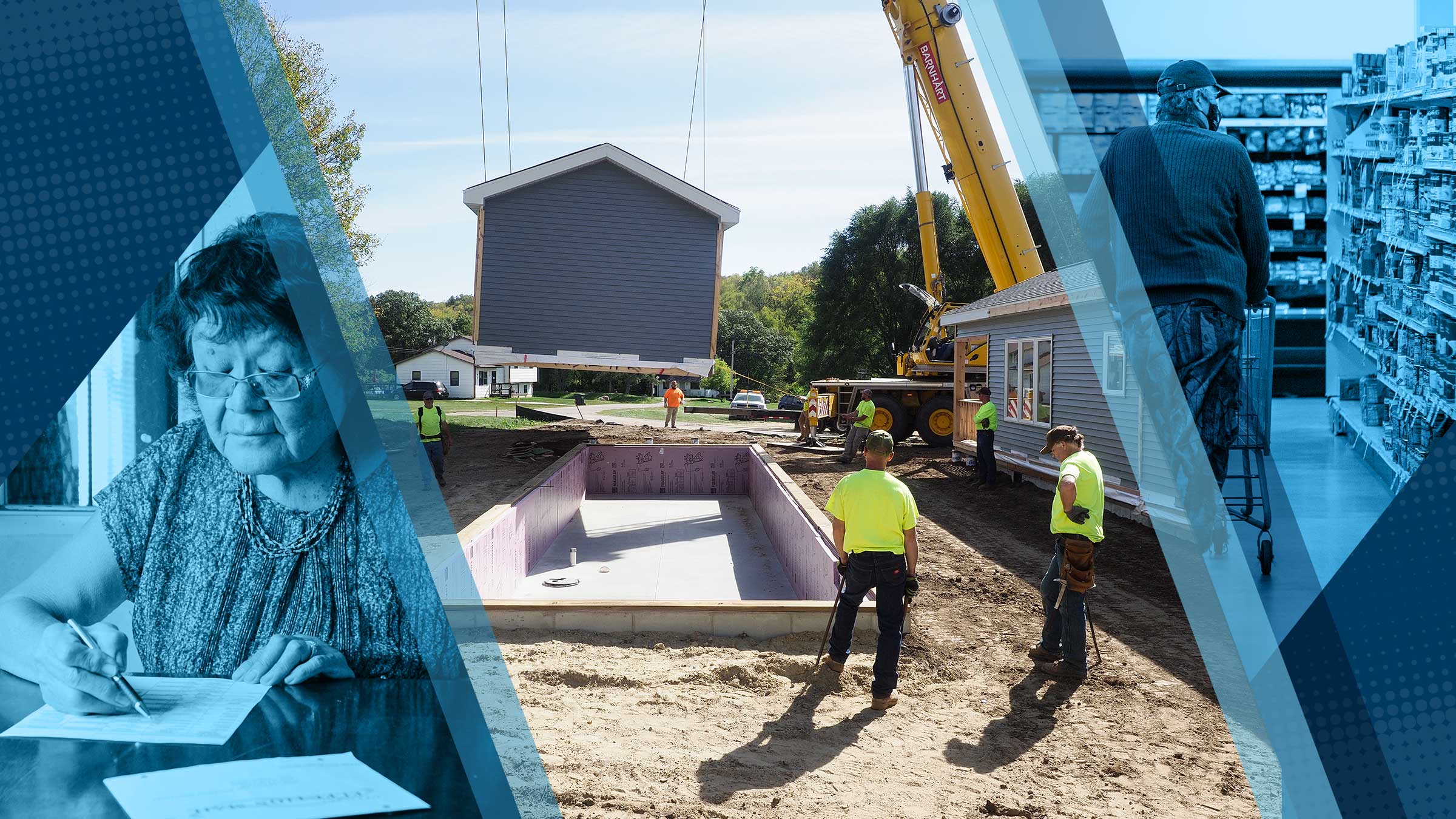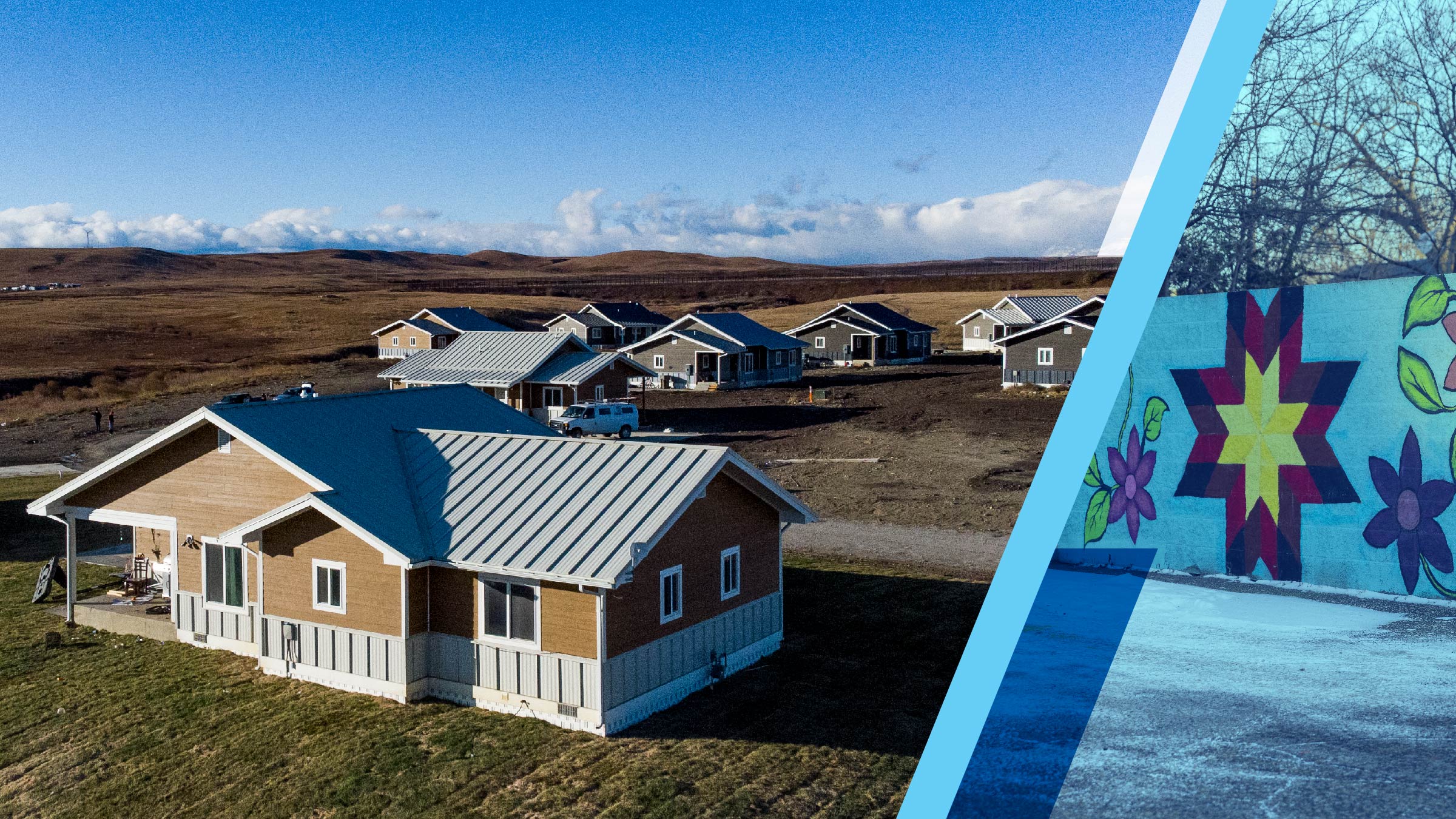The Board of Governors of the Federal Reserve System (Board), the Federal Deposit Insurance Corporation (FDIC), and the Office of the Comptroller of the Currency (OCC) (hereafter collectively referred to as the agencies) recently announced a final rule to revise the regulations implementing the Community Reinvestment Act (CRA), a federal law that assesses how well federally insured banks help to meet the credit needs of their entire communities, including low- and moderate-income (LMI) areas. CRA modernization involved extensive outreach to Indian Country stakeholders by federal regulators during public comment periods. The new rule reflects a once-in-a-generation update to the regulations implementing the CRA, with the last significant interagency revision taking place in 1995.
Congress enacted the CRA more than 45 years ago to mitigate and repair damage done to LMI communities by past discriminatory practices such as redlining. The CRA established a requirement that the regulatory agencies assess banks’ records of helping to meet the credit needs of the communities they serve, consistent with safe and sound banking operations. The new regulations provide banks with greater clarity, consistency, and transparency for CRA evaluations, including performance standards used to assess qualifying community development activities. The modernized CRA regulations include—for the first time—unique provisions to recognize activities that help address the needs of Native communities by defining Native geographic areas and the qualifying community development activities within those geographic areas that help address those needs.
Previously, the Board sought feedback from stakeholders in the Advance Notice of Proposed Rulemaking (issued September 2020). Later, the three agencies together published a Notice of Proposed Rulemaking (issued May 2022), which also included a comment period for public feedback. During the rulemaking process, CICD partnered with national Native organizations to host Indian Country-specific webinars and listening sessions where attendees were encouraged to provide written and oral comments on the proposed changes to the regulations.
CRA reform objectives
On October 24, 2023, the agencies issued the final rule to revise the regulations implementing the CRA in order to accomplish the following objectives:
- Strengthen the achievement of the core purpose of the statute;
- Adapt to changes in the banking industry, including the expanded role of mobile and online banking;
- Provide greater clarity and consistency in the application of the regulations;
- Tailor performance standards to account for differences in bank size and business models and local conditions;
- Tailor data collection and reporting requirements and use existing data whenever possible;
- Promote transparency and public engagement;
- Confirm that CRA and fair lending responsibilities are mutually reinforcing; and
- Promote a consistent regulatory approach that applies to banks regulated by all three agencies.
Defining Native Land Areas
The final rule introduces Native Land Areas (NLAs) to provide clarity in support of recognizing qualifying bank activities that help to address the significant community development challenges in these areas. Under the revised regulation, any activities that meet the newly defined criteria in NLAs are considered CRA-eligible. In addition, community development activities that occur in NLAs are given impact and responsiveness consideration to recognize banks that provide banking services, community development financing, and volunteer work in these areas. While eligible CRA activities taking place in these geographic areas could have qualified under the prior rule, the new regulations provide more clarity and certainty for the rule’s application to activities in these areas.
The definition of NLAs in the final rule is intended to align with existing and established federal Indian law regarding lands and communities with unique political status, and to be responsive to stakeholder feedback. The definition focuses on lands and communities that, as noted by commenters, have generally experienced little or no benefits from bank access or investments. The agencies believe that these parameters, in addition to using durable and publicly available data sources, will make identifying NLAs practicable for stakeholders and facilitate their ability to engage in and track CRA-eligible activities.
The regulations generally define NLAs as including the following geographic areas:1
- “Indian country” as defined in title 18 of the United States Code at section 1151 (18 U.S.C. §1151);
- Land held in trust by the U.S. government for tribes and individuals, as well as tribally and individually owned restricted fee lands;
- Any Native villages in Alaska as defined in 43 U.S.C. §1602(c);
- Native Hawaiian Homelands;
- State-recognized American Indian reservations;
- American Indian Joint-Use Areas;
- Alaska Native Village Statistical Areas;
- Oklahoma Tribal Statistical Areas;
- Tribal Designated Statistical Areas; and
- State-designated Tribal Statistical Areas.
For a deep dive on the historical and legal definitions of land areas associated with Indian Country, including some of those specified in the NLA definition, see What is Indian Country?
In discussing the NLA category, the final rule cites available data indicating that Native and tribal communities face significant and unique community development challenges. For example, in the final rule, the agencies note an estimated 35 percent poverty rate for Native individuals on federally recognized reservations and off-reservation trust lands, with some of these communities experiencing poverty rates above 50 percent. The final rule also presents data on the proportion of unbanked American Indian and Alaska Native households (7 percent in 2021) and the lower average number of bank branches in majority Native American counties relative to other areas. The rule also notes evidence of infrastructure gaps, including housing deficiencies and gaps in broadband access.2
In addition, research from CICD has identified significant gaps in the public and private financing resources available in Indian Country, including lower credit card limits in tribal-area neighborhoods with a high percentage of American Indian and Alaska Native residents and taxation challenges that deprive tribal governments of public revenues. Other CICD research has found that Native American borrowers on reservations pay more for home loans than White borrowers on average.
Qualifying community development activities in NLAs
To provide clarity on the kinds of activities that will receive CRA consideration, the updated regulations define qualifying activities in NLAs as including the following:
- Community revitalization or stabilization activities;
- Essential community facilities and essential community infrastructure; and
- Disaster preparedness and weather-resiliency activities.
Revitalization or stabilization activities in NLAs include adaptative reuse of vacant or blighted buildings, brownfield redevelopment, plans for business improvement districts, and any other activity that supports community revitalization or stabilization.
Essential community facilities are described in the final rule as public facilities that provide essential services generally accessible by a local community, including—but not limited to—schools, libraries, child care facilities, parks, hospitals, health care facilities, and community centers that benefit or serve NLAs. Essential community infrastructure activities in the final rule comprise activities benefitting or serving NLAs, including—but not limited to—broadband, telecommunications, mass transit, water supply and distribution, and sewage treatment and collection systems.
Disaster preparedness and weather-resiliency activities are defined in the final rule as activities that assist individuals and communities in NLAs with preparing for, adapting to, and withstanding natural disasters or weather-related risks or disasters.
In addition, qualifying activities in NLAs—including community revitalization or stabilization efforts, development of essential community facilities and eligible community infrastructure, and disaster preparedness and weather-resiliency activities—must generally meet the following criteria:
- Benefit or serve residents, including LMI residents of NLAs;
- Not directly result in the forced or involuntary relocation of LMI residents in those areas; and
- Be in conjunction with a federal, state, local, or tribal government or a mission-driven nonprofit organization plan, program, or initiative with an explicit focus on benefitting or serving NLAs.
The requirement that a qualifying activity work in conjunction with a federal, state, local, or tribal government or a mission-driven nonprofit organization plan, program, or initiative helps ensure that activities correspond with broader community-level planning and, by extension, community needs.
With regard to revitalization or stabilization activities, the modernized CRA rule requires “that the plan, program, or initiative include ‘a particular focus on low- or moderate-income households.’” The rule explains, “As discussed in the proposal, the agencies are adopting a more targeted criterion for revitalization or stabilization activities, because Native Land Areas include some middle- and upper-income census tracts that are not designated as distressed or underserved non-metropolitan middle-income census tracts. This criterion allows consideration for activities conducted in geographic areas that include middle- and upper-income census tracts, but retains the focus on low- and moderate-income households. Based on supervisory experience, the agencies believe that the types of projects that could qualify as revitalization and stabilization activities are more feasibly and likely to be developed to target specific income levels than other categories of place-based activities.”3
In addition, revitalization or stabilization activities must also include “substantial benefits for low- or moderate-income residents.” For example, a bank’s purchase of a bond to fund a distribution center in an NLA, where a substantial number of employment opportunities are expected to be filled by LMI residents of the NLA, may qualify for consideration if the activity met other required criteria.
Additionally, outside of the new NLA category, other kinds of community development activities that benefit or serve residents of NLAs—such as affordable housing development or activities with CDFIs—may also qualify for CRA credit, provided they meet the eligibility criteria for those activities.
An important change from the previous CRA regulations is that banks will now be able to receive credit for activities outside of their assessment area as long as the qualifying activity meets required eligibility criteria. This means that a bank from any geographic area could receive consideration for qualifying projects in NLAs—even if the activities occurred outside of the bank’s assessment area. This provision broadens the universe of banks that can help to fulfill their CRA obligations through loans, investments, and services in NLAs.
Evaluating the impact and responsiveness of community development activities in NLAs
Modernized CRA regulations seek to standardize the assessment of the impact and responsiveness of a bank’s community development performance. To this end, the new regulations include a list of “impact and responsiveness review factors” to help guide a consistent qualitative evaluation of community development activities. These factors, in combination with the standardized community development financing metrics and benchmarks adopted in the final rule, contribute to how the agencies will arrive at community development-related performance conclusions in CRA evaluations.
One impact and responsiveness review factor focuses on qualifying community development activities that benefit or serve residents in NLAs. The impact factor will include all eligible activities taking place in NLAs, including both those eligible under the “Activities in NLAs” category, as well as other eligible community development activities that benefit or serve NLAs and meet other community development qualification criteria.
In addition to the impact and responsiveness review factor focused on activities in NLAs, other impact and responsiveness review factors also address eligibility criteria for community development activities that can benefit NLAs. For example, an affordable housing project that serves an NLA or activities in an NLA undertaken with Community Development Financial Institutions (CDFIs), including Native CDFIs, may also qualify under other impact and responsiveness review criteria addressing affordable housing activities and activities undertaken with CDFIs. A difference in the financial services landscape since the last CRA update is the small but significant number of CDFIs now serving NLAs.
Activities benefiting Native individuals and communities outside of NLAs
Activities that benefit or serve Native communities more broadly that are not included under the NLA category may qualify for CRA consideration if they meet the eligibility criteria under another eligible community development category. For example, a loan to build an affordable housing project that benefits LMI tribal individuals could qualify if it meets the criteria of the affordable housing category of community development, regardless of whether the housing is located in an NLA.
The agencies may consider various impact and responsiveness review factors in evaluating a bank’s community development activities. These include impact and responsiveness review factors recognizing loans, investments, and services in areas with low levels of community development; activities serving low-income individuals, families, or households; and activities supporting small businesses or small farms with gross annual revenues of $250,000 or less. These other impact and responsiveness review factors apply regardless of whether an activity benefits or serves an NLA and, as a result, may apply to activities benefiting individuals living adjacent to or otherwise outside of an NLA.
Learn more about the modernized CRA regulation
Most provisions in the modernized CRA regulation will go into effect on January 1, 2026. Importantly for Indian Country, the new rule includes specific provisions focused on NLAs and qualifying activities in those areas. To learn more about these provisions, visit CRA resource pages on the Board website and the Federal Reserve Bank of Minneapolis website, where Minneapolis Fed staff will continue to post resources relevant to Indian Country.
Endnotes
1 Community Reinvestment Act Final Rule, §
2 Community Reinvestment Act Final Rule, §
3 Community Reinvestment Act Final Rule, §

Michou Kokodoko is a senior policy analyst in the Minneapolis Fed’s Community Development and Engagement department. He leads the Bank’s efforts to promote effective community-bank partnerships by increasing awareness of community development trends and investment opportunities, especially those related to the Community Reinvestment Act.






